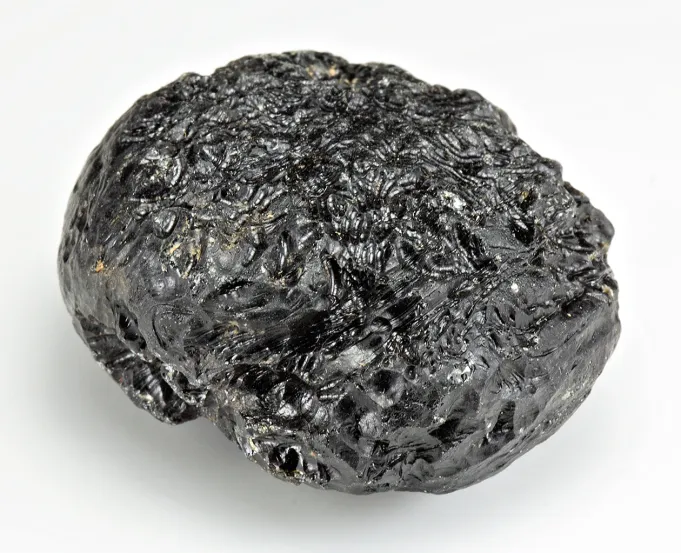
Appearance
Because tektites cool quickly after melting, they have a vitreous or glassy texture. The quick solidification of molten material after their ejection and atmospheric reentry is what gives tektites their distinctive glassy appearance. Tektites are found in a multitude of forms and shapes. They may have an uneven shape, be drop-shaped, oval, spherical, or disc-like. The forces acting on the molten material during its journey through the atmosphere, the angle of impact, and the ejection velocity all have an impact on the forms.
A vast spectrum of hues can be seen in tektites, such as various tones of black, dark brown, green, and occasionally even translucent or transparent forms. The original target rocks’ chemical makeup, the degree of oxidation during reentry, and the rate at which the molten material cools down are frequently to blame for the color differences.
Geographical Distribution
Tektites are found in North America, Europe, Asia, Australia, and Africa, among other continents. Australites from Australia, Indochinites from Southeast Asia, and Moldavites from the Czech Republic are a few well-known varieties of tektites.
History
Centuries of dispute have surrounded the nature and origin of tektites, with many cultures giving these enigmatic objects diverse histories and interpretations. Many people once believed that tektites were created by lightning strikes, which is why they were given the nickname “thunderstones” in many different cultures.
But in the middle of the 20th century, the current knowledge of tektite origins started to take shape. The idea that tektites were the result of meteorite strikes gained widespread acceptance. High-energy impacts are used in the process, melting local rocks and soil with the heat produced after impact. The melted material then cools and solidifies before being released into the sky.
Chemical Composition
Glasses rich in silica, known as tektites, have an average silica content of 68% in the Ivory Coast and 80% in North American geographies.

Types
These are a few of the main tektite species:
Australites:
Australia and Southeast Asia are home to the majority of Australites. They are characterized by their extended forms, and their surfaces frequently have a characteristic “button” or “thumbprint” feature. Their hues vary, ranging from dark brown or black to greenish or even translucent.
Indochinites:
Southeast Asia is home to Indochinites, especially in China, Thailand, Cambodia, Vietnam, and Laos. They have a smooth, perhaps slightly wrinkled surface and are frequently spherical or oval in shape. Their hues range from dark black to green and brown tones.
Moldavites:
The Czech Republic and the neighboring regions of Central Europe are home to moldavites. They are well known for their distinct greenish hue and frequently have asymmetrical structures that resemble molten glass droplets.
Philipinites:
The Philippines is home to tektites known as Philippinites. They frequently have round or disc-like forms and are somewhat tiny. They are dark brown to black in color. The origin of Philipinites is thought to have come from a smaller impact event.
Bediasites:
Texas, USA is home to bediasites, which are tektites. Their diameters usually range from a few centimeters to millimeters, therefore they are little. They are frequently described as having an irregular and flattened appearance.
Georgiaites:
Georgia, USA is home to Georgiaites, tektites. They are distinguished by their dark brown or black color and frequently have smooth, spherical, and tiny textures.
Ivory Coast Tektites:
West Africa is home to these tektites, especially the Ivory Coast. They can have rough textures and asymmetrical shapes, and they are rather huge. They range in hue from dark brown to black.
Uses
- Certain tektite variants have been cut and used for jewelry since prehistoric times, despite the fact that the majority of the pieces are extremely tiny.
- The naturally occurring glass known as tektite is created when meteorite collisions release debris. Certain tektite variants have been cut and used for jewelry since prehistoric times, despite the fact that the majority of the pieces are extremely tiny.
Table





